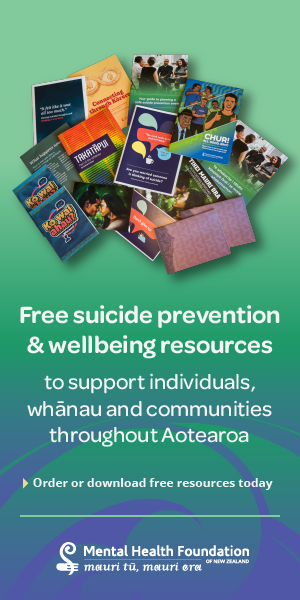
CASE STUDY
Billy has a cold
Five-year-old Billy is a Pākehā boy, who lives with his parents and eight-year-old brother on a small lifestyle block in Canterbury. Billy’s mum is concerned because he has a five-day history of sneezing, runny nose, nasal congestion and sore throat. For the past three days he’s had a cough, which was initially dry but is now productive with yellowish sputum.
 Billy’s mum has administered several COVID-19 rapid antigen tests, which have all returned negative results. Billy’s family received free COVID-19 and influenza vaccinations two months ago.
Billy’s mum has administered several COVID-19 rapid antigen tests, which have all returned negative results. Billy’s family received free COVID-19 and influenza vaccinations two months ago.
Billy’s family is going camping for a week and his mum tells you she thinks Billy should start on antibiotics “just in case” he has an infection that could worsen while they are away.
Billy has erythema of the posterior pharynx with enlarged tonsils but no exudates. The tympanic membranes are mildly erythematous bilaterally, with no evidence of fluid or retraction. There is no palpable swelling of the lymph nodes in his neck, and lung auscultation reveals only a few scattered expiratory wheezes bilaterally. He does not have a fever.
There are no signs suggestive of bacterial infection at this time, so you are of the opinion he does not require antibiotics.
Billy’s signs and symptoms show strong evidence of a viral respiratory tract infection. There are no signs suggestive of bacterial infection at this time, so you are of the opinion he does not require antibiotics.
Mum expects antibiotics
How do you explain to Billy’s mum that antibiotics are not needed, given her expectation for them?
Reassure Billy’s mum that he has a cold that is caused by a virus, and that viral cold infections get better of their own accord, usually within a week.

How can decision-making
be shared?
Given that the decision-making process should be shared by clinician and patient, how can we manage patient objections to, or concerns about a recommendation they receive no medicine, when they think one is required?
Shared decision-making involves aligning the goals of patient and health-care provider, acknowledging that each has a degree of expertise: the provider with medical evidence and clinical experience, and the patient with what is important to them and the treatment and outcomes they will accept.
Complete agreement between provider and patient may not occur, but their expertise combines to evaluate available options, resulting in an informed final decision.5
Overestimating benefits of antibiotics and underestimating their risks can be a common theme among both providers and patients. If the patient is interested, discuss with them the benefits and risks of antibiotics for the condition they are presenting with.5
Inform them that resolution of a viral infection will not be any quicker with antibiotic than with symptomatic and supportive treatment, and unwanted side effects (such as nausea, diarrhoea, thrush and rash) are more likely to occur.
Ask about goals and expectations from antibiotic use. When do they expect to feel better? What would be the impact on them of nausea and diarrhoea caused by an antibiotic?
Seek out decision aids to help inform the patient, and provide these in printed or electronic form.
Finally, health-care providers may presuppose the patient wants an antibiotic prescription when the patient just desires a clear plan of action.5 If the patient is willing, work together on a specific plan, including non-pharmacological measures to relieve symptoms, and detailed criteria for when the patient should return to their provider to seek further advice.
Billy does not have any features of a bacterial infection – his sore throat will be due to his cold. Explain that antibiotics are not effective against viruses and will not reduce the time taken for Billy to get better. However, Billy may benefit from some rest and symptom relief such as:1, 2
- warm honey and/or lemon drinks
- ice blocks or cool drinks
- paracetamol or ibuprofen (these should be dosed by weight)
- gargling with a warm saline solution (1 tsp salt in 250ml water) if Billy is capable of gargling
- throat sprays, if appropriate for Billy.
Medicated throat lozenges may not be appropriate for a child of Billy’s age because of choking risk.
Together with Billy’s mum, devise a clear plan of action. Provide a printout of advice and red-flag information, such as that from Healthify He Puna Waiora (previously Health Navigator) or KidsHealth. Let her know that these patient handouts include the Healthline number (0800 611 116), which is a 24-hour, seven-days-a-week service providing free health advice. See also He Ako Hiringa’s virus action plans.
Stress that the development of red-flag symptoms is highly unlikely, but if any were to occur, she should take Billy to the nearest hospital. Red flags for children with viral respiratory tract infections include:1, 2
- drooling/dribbling – indicates difficulty in swallowing saliva
- difficulty breathing – struggling or grunting when trying to breathe
- bluish lips or tongue
- stiff neck
- extreme drowsiness or confusion.
Additionally, Billy’s mum should seek out a health-care provider for review if Billy:1, 2
- develops a very high temperature
- is unable to drink much or has a dry mouth, difficulty swallowing or reduced urine output
- develops severe pain at the back of his throat
- breaks out in a rash
- has increased snoring episodes or stops breathing occasionally while asleep
- has a cough lasting more than four weeks
- has no improvement in symptoms after 48 hours.
What about strep throat?
If Billy’s mum is still not convinced that antibiotics are not needed, and asks if it could be strep throat, explain to her that her son has features of a cold, such as a runny nose and a productive cough, features that are unusual in strep throat.
Additionally, antibiotics would be used only if he was at high risk of developing rheumatic fever which is a rare complication of a strep throat bacterial infection.
However, Billy’s risk of rheumatic fever is very low.3 Similarly, Billy doesn’t require a throat swab as he is at low risk of rheumatic fever and not significantly unwell.3, 4
Explain that it is important to use antibiotics only when needed, to avoid possibly experiencing adverse effects such as diarrhoea, and to limit the development of antibiotic resistance and safeguard their usefulness.
Māori, Pacific children more at risk
Billy is of European ethnicity; how would his management change if he were of Māori or Pacific ethnicity? What other history would be important?
Māori or Pacific children are at increased risk of developing rheumatic fever, relative to children of other ethnicities. Risk criteria for rheumatic fever include:3

- personal, family or household history of rheumatic fever or two or more of:
- Māori or Pacific ethnicity
- aged 3-35 years (with emphasis on children and adolescents)
- living in poor or crowded living conditions.
If Billy were of Māori or Pacific ethnicity, he would have two of the high-risk criteria (age and ethnicity). Early treatment of his sore throat would be needed, as antibiotics can stop the development of rheumatic fever following infections caused by Group A Streptococcus (GAS).
Billy’s throat should be swabbed to check for GAS and he would need a prescription for 10 days of empiric penicillin or amoxicillin. If the swab is positive for GAS, Billy should be isolated at home for 24 hours after starting the antibiotics, which should be continued for the 10 days. If the swab is negative, the antibiotics can be stopped.3
It would be important to know if anyone else in the household or family is sick. Strep throat is spread through coughing and sneezing, and sharing cups and utensils. The incubation period is between two days and one week.
If someone in the family has strep throat, often others in the household are also infected, so recommend all symptomatic household members have their throats swabbed, especially if they are children or adolescents.3
Māori or Pacific children are at increased risk of developing rheumatic fever, relative to children of other ethnicities.
Notes about amoxicillin + clavulanic acid
Non-prescribers can access He Ako Hiringa’s online EPiC dashboard to explore national dispensing data. Prescribers, including pharmacist and nurse prescribers, can use the EPiC dashboard to freely access their own prescribing data. They can compare their data with practice data and national data.
Amoxicillin + clavulanic acid use is high
The addition of clavulanic acid to amoxicillin extends the antibiotic amoxicillin’s spectrum of activity, adding cover against anaerobic and gram-negative bacteria. In primary care, amoxicillin + clavulanic acid is recommended first-line for only a small number of clinical indications.6 Generally, these are:
- human and animal bites
- diabetic foot ulcer
- mastitis in males and non-lactating females.
Given these few first-line indications, low levels of amoxicillin + clavulanic acid dispensing in the community would be expected. However, data from the EPiC Antibiotics dashboard clearly show high use of amoxicillin + clavulanic acid in Aotearoa. In fact, this drug combination remains the second most-used antibiotic after amoxicillin.7
There is a seasonal shift in prescribing
The EPiC dashboard also shows a seasonal shift in antibiotic prescribing, indicating they are likely being used inappropriately, and possibly for viral illnesses, over the winter months.7
Amoxicillin + clavulanic acid should not be used to treat community-acquired pneumonia; this condition is most commonly a result of gram-positive bacteria. Treatment guidelines suggest community-acquired pneumonia can usually be sufficiently treated with amoxicillin alone.6
Including indications on prescriptions may reduce use
Before prescribers provide a script for amoxicillin + clavulanic acid, they should be considering whether this extended cover is required for the infection they are treating.
One of the World Antimicrobial Awareness Week recommendations, from a World Health Organization initiative, is for prescribers to add a meaningful indication to a prescription for antibiotics, ie to state what specific condition the antibiotic is treating. This prompts the prescriber to reflect on their choice of antibiotic and facilitates communication between health-care providers and patients.8
Infectious diarrhoea is more likely
Nearly all antibiotics can increase susceptibility to colonisation and overgrowth of toxin-secreting bacteria Clostridioides difficile (previously called Clostridium difficile) — which causes infectious diarrohoea — but amoxicillin + clavulanic acid along with cephalosporins, fluoroquinolones and clindamycin increase risk to the greatest extent.9
Using the EPiC dashboard for CPD
Reading this article and completing the reflection activities mentioned below can earn 0.5 hours CPD.
The EPiC dashboard has an antibiotics theme which includes three data stories:
-
- Amoxicillin + clavulanic acid,
- Urinary tract infection
- Topical antibiotics.
Each of these has a set of reflection activities that are suitable for completing as part of your continuing professional development. Clicking on the EPiC Reflect button helps you, as an individual or as part of your team, to think about your current practice.
For example:
-
- How does dispensing of antibiotics to different demographic groups compare nationally?
- How do national dispensing data compare to the recommendations for urinary tract infection antibiotic choice and length of course?
- Does the EPiC dashboard show a winter seasonality shift in amoxicillin + clavulanic acid prescribing in your practice?
Lauren Smith is a senior practice fellow at the School of Pharmacy at the University of Otago and a member of the New Zealand Antimicrobial Stewardship and Infection Pharmacist Expert Group (NAMSIPEG).
This article was reviewed by Dr Jim Vause, an emeritus GP; and Dr Noni Richards (BPharm, PhD), a senior consultant at Matui Ltd, developers of the EPiC dashboard.
This article has been reproduced with permission from He Ako Hiringa.
References
- Healthify He Puna Waiora. Patient resources: Sore throat in children. (updated Aug 3, 2022); Cough in children (updated Nov 24, 2022); A cold or the flu? Or COVID-19? (updated Nov 24, 2022).
- KidsHealth. Patient resources: Sore throat in detail. (reviewed Mar 5, 2021); Cough in children (reviewed February 14, 2022).
- Heart Foundation. (2019). New Zealand guidelines for rheumatic fever: Group A streptococcal sore throat management guideline: 2019 update.
- HealthPathways Community: Auckland Region. (2023). Sore throat. (log on required).
- Ko, L., Ha, R., Leung, V., & Langford, B. J. (2020). Shared decision making and antibiotic stewardship: Will pharmacists rise to the challenge? Canadian Pharmacists Journal, 153(1), 12-14.
- BPACnz. (2023). Antibiotics: Choices for common infections.
- He Ako Hiringa. (n.d.) EPiC: Antibiotics.
- Pharmaceutical Society of New Zealand. (n.d.). Antimicrobial Indication Initiative.
- Mullish, B. H., & Williams, H. R. T. (2018). Clostridium difficile infection and antibiotic-associated diarrhoea. Clinical Medicine Journal, 18(3), 237-41.




